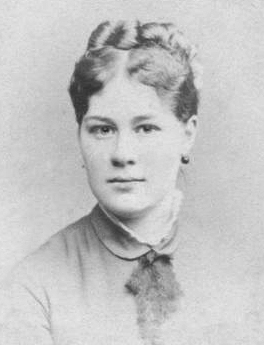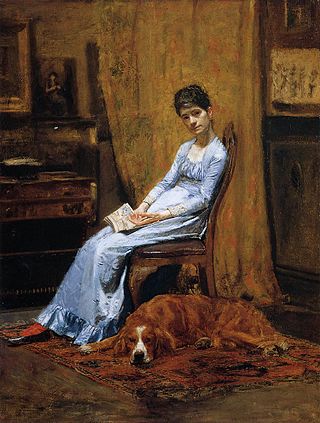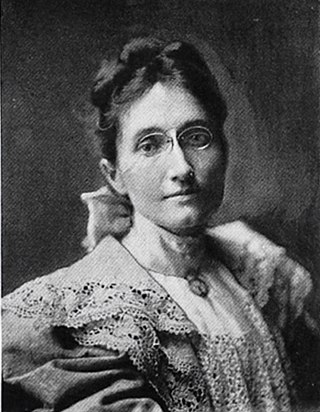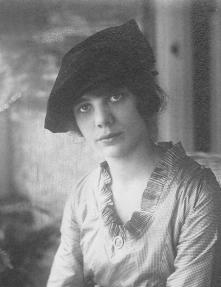Related Research Articles

Eliza Cecilia Beaux was an American artist and the first woman to teach art at the Pennsylvania Academy of the Fine Arts. Known for her elegant and sensitive portraits of friends, relatives, and Gilded Age patrons, Beaux painted many famous subjects including First Lady Edith Roosevelt, Admiral Sir David Beatty and Georges Clemenceau.

Mary Elizabeth Price, also known as M. Elizabeth Price, was an American Impressionist painter. She was an early member of the Philadelphia Ten, organizing several of the group's exhibitions. She steadily exhibited her works with the Pennsylvania Academy of the Fine Arts, the National Academy of Design, and other organizations over the course of her career. She was one of the several family members who entered the field of art as artists, dealers, or framemakers.

The Philadelphia Ten, also known as The Ten, was a group of American female artists who exhibited together from 1917 to 1945. The group, eventually numbering 30 painters and sculptors, exhibited annually in Philadelphia and later had traveling exhibitions at museums throughout the East Coast and the Midwest.

Alice Schille (1869–1955) was an American watercolorist and painter from Columbus, Ohio. She was renowned for her Impressionist and Post Impressionist paintings, which usually depicted scenes featuring markets, women, children, and landscapes. Her ability to capture the character of her subjects and landscapes often resulted in her winning the top prize in art competitions. She was also known for her versatility in painting styles; her influences included the “Dutch Old Masters, James McNeill Whistler, the Fauves, and Mexican muralists.” Her estate is represented by Keny Galleries in Columbus, OH.
Emma Fordyce MacRae was an American representational painter. She was a member of the Philadelphia Ten, a group of women artists who worked and exhibited together. Her work — including still lifes and paintings of women — shows the influence of Asian flower paintings and of Seurat.
Clara Elsene Peck was an American illustrator and painter known for her illustrations of women and children in the early 20th century. Peck received her arts education from the Minneapolis School of Fine Arts and was employed as a magazine illustrator from 1906 to 1940. Peck's body of work encompasses a wide range, from popular women's magazines and children's books, works of fiction, commercial art for products like Ivory soap, and comic books and watercolor painting later in her career. Peck worked during the "Golden Age of American Illustration" (1880s–1930s) contemporaneous with noted female illustrators Jessie Willcox Smith, Elizabeth Shippen Green and Violet Oakley.

Susan Hannah Eakins was an American painter and photographer. Her works were first shown at the Pennsylvania Academy of the Fine Arts, where she was a student. She won the Mary Smith Prize there in 1879 and the Charles Toppan prize in 1882.

Janet Fish is a contemporary American realist artist. Through oil painting, lithography, and screenprinting, she explores the interaction of light with everyday objects in the still life genre. Many of her paintings include elements of transparency, reflected light, and multiple overlapping patterns depicted in bold, high color values. She has been credited with revitalizing the still life genre.

Ethel McClellan Plummer (1888–1936) was an American artist who resided primarily in New York. She worked primarily with drawings, prints, and paintings. She was the Vice President of the Society of Illustrators and Artists and exhibited at the Society of Independent Artists in 1910, the MacDowell Club in 1915, the Exhibition of Painting and Sculpture by Women Artists for the Benefit of Woman Suffrange Campaign at the Macbeth Gallery (1915). She worked as an illustrator for various magazines, including Life, Vogue, Shadowland, and Vanity Fair.

Alice Barber Stephens was an American painter and engraver, best remembered for her illustrations. Her work regularly appeared in magazines such as Scribner's Monthly, Harper's Weekly, and The Ladies Home Journal.

Jennie Augusta Brownscombe was an American painter, designer, etcher, commercial artist, and illustrator. Brownscombe studied art for years in the United States and in Paris. She was a founding member, student and teacher at the Art Students League of New York. She made genre paintings, including revolutionary and colonial American history, most notably The First Thanksgiving held at Pilgrim Hall in Plymouth, Massachusetts. She sold the reproduction rights to more than 100 paintings, and images of her work have appeared on prints, calendars and greeting cards. Her works are in many public collections and museums. In 1899 she was described by New York World as "one of America's best artists."

Marion Boyd Allen was an American painter, known for her portraits and landscapes.
Elizabeth Osborne is an American painter who lives and works in Philadelphia. Working primarily in oil paint and watercolor, her paintings are known to bridge ideas about formalist concerns, particularly luminosity with her explorations of nature, atmosphere and vistas. Beginning with figurative paintings in the 1960s and '70s, she moved on to bold, color drenched, landscapes and eventually abstractions that explore color spectrums. Her experimental assemblage paintings that incorporated objects began an inquiry into psychological content that she continued in a series of self-portraits and a long-running series of solitary female nudes and portraits. Osborne's later abstract paintings present a culmination of ideas—distilling her study of luminosity, the landscape, and light.

Elizabeth Sparhawk-Jones was an American painter who lived in New York City, Philadelphia, and Paris, France. She had a successful career as a painter at the turn of the century, exhibiting her works internationally and winning awards. She had a mental breakdown that caused a break in her career, and she returned to have a successful second career, creating modern watercolor paintings. She was a resident at three artist colonies, with notable artists, writers, and musicians. Sparhawk-Jones' works are in American art museums, including the Art Institute of Chicago, Metropolitan Museum of Art, and Museum of Modern Art.

CatharineCarter Critcher was an American painter. A native of Westmoreland County, Virginia, she worked in Paris and Washington, D.C. before becoming, in 1924, a member of the Taos Society of Artists, the only woman ever elected to that body. She was a long time member of the Arts Club of Washington.
Molly Luce was an American painter.

The sisters Clara Welles Lathrop (1853–1907), Bessie Stebbins Lathrop (1854–1930) and Susanne (Susie) Lathrop (1860–1938) were artists and teachers in Northampton, Massachusetts, who exhibited and traveled widely. Clara was a painter, Bessie was a leather worker and woodcarver, and Susie illustrated publications. In addition to exhibiting in the U.S. and Europe, they organized intellectual salons at their Northampton studio and taught art at schools including Smith College.
Edith Lucile Howard (1885–1959) was an American landscape artist. She was born in Bellow Falls, Vermont, and died of cancer in Moorestown, New Jersey, in 1959.

Grace Thorp Gemberling was an American artist known for the broad range of her subjects in paintings having a pronounced psychological as well as aesthetic impact. One critic said they conveyed a mood that was "ethereal, bold and engaged." Another said her work showed "a disciplined hand and a romantic eye" together with "a magical color sense." Known for her control of detail and successful handling of line and blocks of color, she was said to paint in a modernist style that stayed clear of abstraction and was remembered by a teacher and fellow artist as "the finest woman painter in Philadelphia during the 20s and 30s."
Margaretta Shoemaker Hinchman (1876–1955) was a prize-winning American artist, illustrator, photographer, and sculptor who came from a prominent Pennsylvania Quaker family. She bequeathed her collection of Southwest American art, including her own gouache-on-paper portraits of Navajo individuals, to the University of Pennsylvania Museum of Archaeology and Anthropology. The Pennsylvania Academy of the Fine Arts, the Woodmere Art Museum, and the Delaware Art Museum preserve some of her landscape paintings and illustrations. The Philadelphia Museum of Art preserves her bequest of works by other artists, including George Biddle, Angelo Pinto, Clare Leighton, and Charles Sheeler. Haverford College in Haverford, Pennsylvania preserves her letterbooks in the Quaker and Special Collections division of its library. Among the prizes that Hinchman won was the Mary Smith Prize, which she received twice, including in 1943 for her portrait of the singer Marian Anderson.
References
- ↑ "Marian T. MacIntosh". Clara database . Washington, D.C.: National Museum of Women in the Arts. CLARA-ID 16927. Archived from the original on November 14, 2018.
- 1 2 3 4 5 6 "Marian T. MacIntosh, an artist, is dead". The New York Times. October 3, 1936. Retrieved March 12, 2020.
- ↑ "Macintosh, Marian | Biography". www.mutualart.com. Retrieved 2020-04-22.
- ↑ "State Land Army Heads Investigate Work Here". The Pittsburgh Gazette Times. May 30, 1918. Retrieved March 21, 2020.
- ↑ Williams, Mary Adeline (July 2, 1895). The Story of a Woman's Municipal Campaign. Philadelphia: American Academy of Political and Social Science. p. 87.
- ↑ "Westmoreland Museum of American Art". Artist Info.